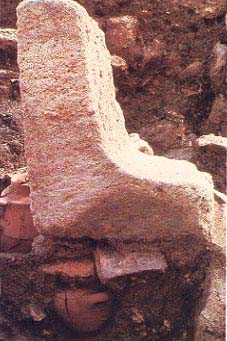Image Details

ASOR Punic Project/James Whitred
L-shaped sandstone monument from the Tanit I level, seventh century B.C. The burial urn beneath this monument contained only charred lamb bones. At this early date Carthage was a newly established town with a small population. The sacrifice of an animal as a substitution for a child was more frequent than in later periods, probably because population growth was considered desirable in the fledgling colony. But later, as Carthage flourished and grew to enormous size, a vow to the gods was more likely to be fulfilled with a child, rather than with an animal substitute.
